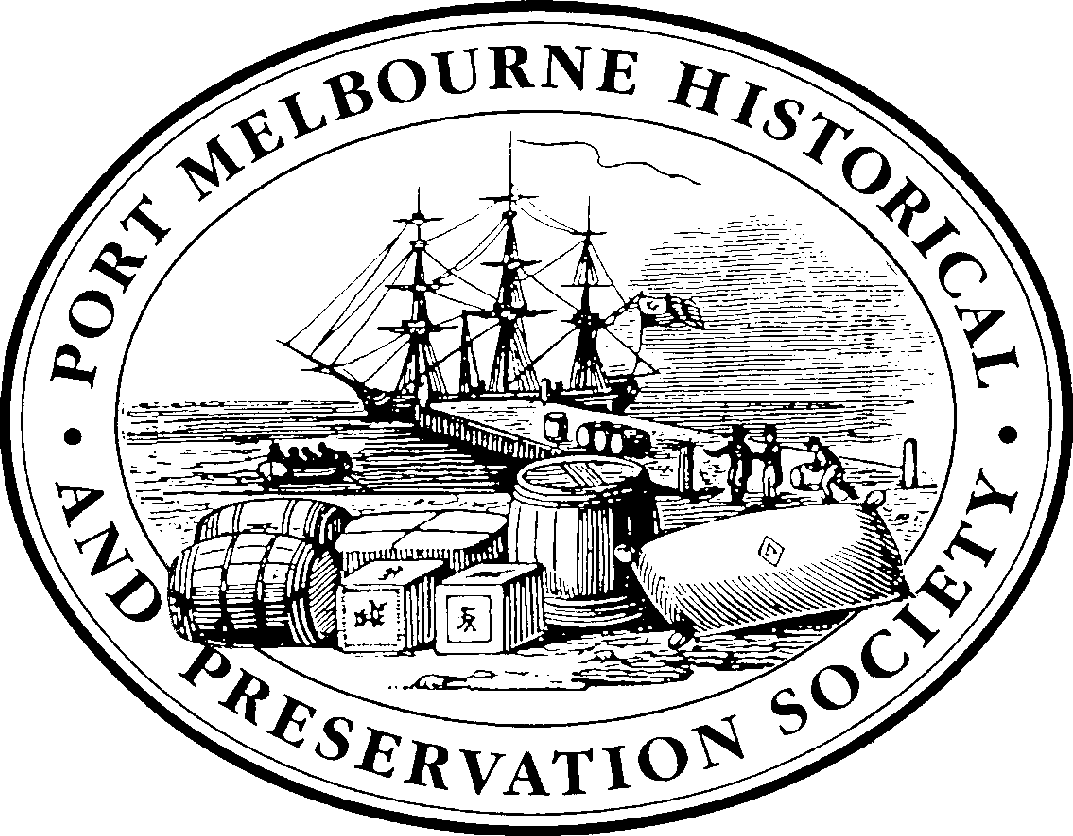Margaret Bride writes:
This is a story told to me by my Grandmother and also by my Mother. The period is some time in the ten years before the First World War, perhaps about 1910. Johnny was a young man with a moderate intellectual disability who lived with his mother in Port Melbourne, I think in Graham Street. Johnny was paid…
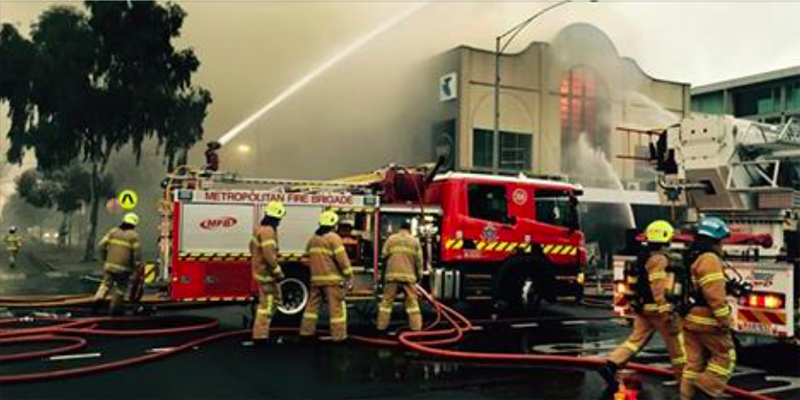
3 September 2015
Fire at the former Port Theatre, Bay Street, Port Melbourne Sunday 30 August 2015 - Courtesy MFB Facebook Page
Another piece of Port Melbourne’s history may have been claimed by fire. The building that was once the Port Theatre, on the corner of Bay and Liardet Streets, was severely damaged by fire last Sunday.
Around 80 fire fighters…
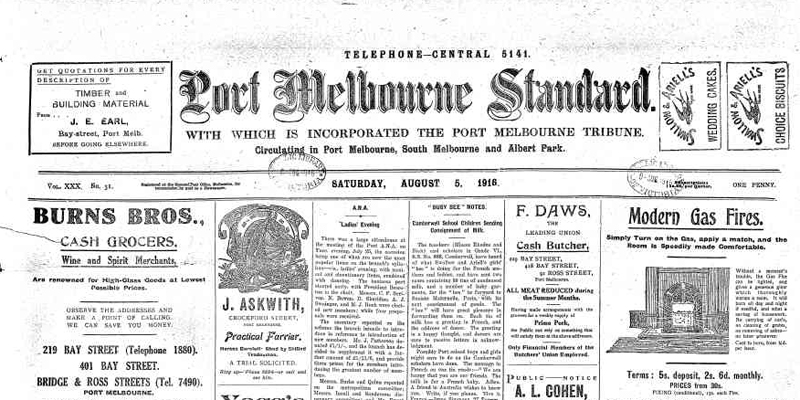
I've been reading a lot of newspapers recently but not the Leader or the Weekly Review that appear in our mailboxes each week these days, I've been reading the Port Melbourne Standard from the time of the First World War. The National Library of Australia have digitised all the weekly editions of the Standard from those war years and added them…
Peggy Antonio was born in Port in 1917. Her father, Francis Antonio, died when she was 15 months old. He was a Chilean docker of French and Spanish parentage.
She learned to play cricket with boys in the streets around her Port Melbourne home. In 1930 after completing a shorthand and typing course, she got a job making boxes in Raymond’s shoe…
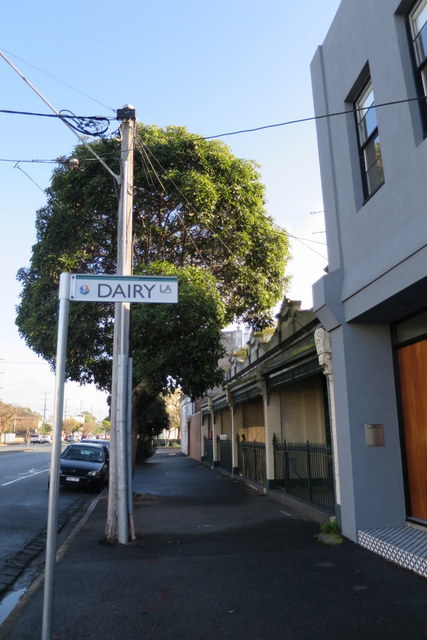
Helen Barry writes:
"My father’s family dairy was at 68 Ingles Street, Port Melbourne from about 1931 to 1972. The property consisted of a two-storey dwelling with a milk bar in the front where Dad’s mother Nellie Barry and sister Bernice sold milk into jugs customers brought with them. The dairy was at the rear of the long lane that separates…
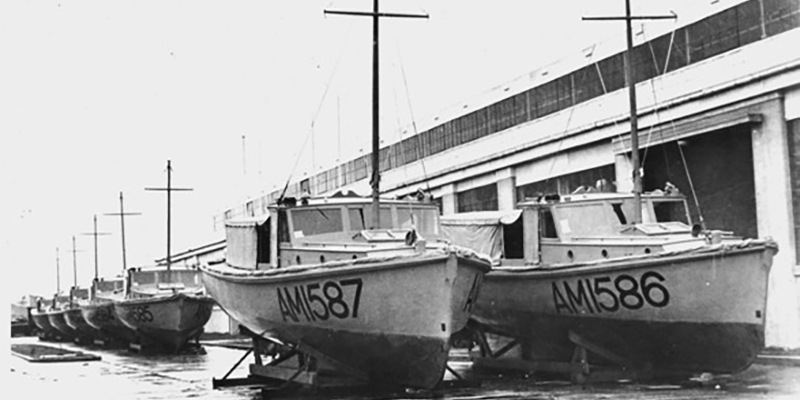
Geoff Deed, who grew up at 41 Nott Street, offers this story from his boyhood in the fifties:
'There was a family called Fletcher that lived in Rouse St - just the mother and the son. His name was Jeffrey - with a 'J'. There was no father. (Maybe he was killed in the war?)
Through the window of their place you could…
Judi Groves (Rose) writes about her grandfather ‘R.T.' Rose (Roland Thomas)
My grandfather – or ‘R.T.’ as he was commonly known – owned the licensed grocer at 168 Ross Street.
He was born in Brunswick in March 1893 and signed up for World War 1 in July 1915. At the time he was a carpenter living at 105 Graham St. He served on…
'I think that there’s a whole lot of symbolism—iconography even—about what a lighthouse means and we use that as a metaphor in all sorts of language: beacon, lighthouse, navigation aid and so forth.' Peter Marquis-Kyle, Heritage Architect
The Port Melbourne Leading Lights were built in 1924, and in conjunction guided ships by marking the centre of the Port Melbourne Channel from…
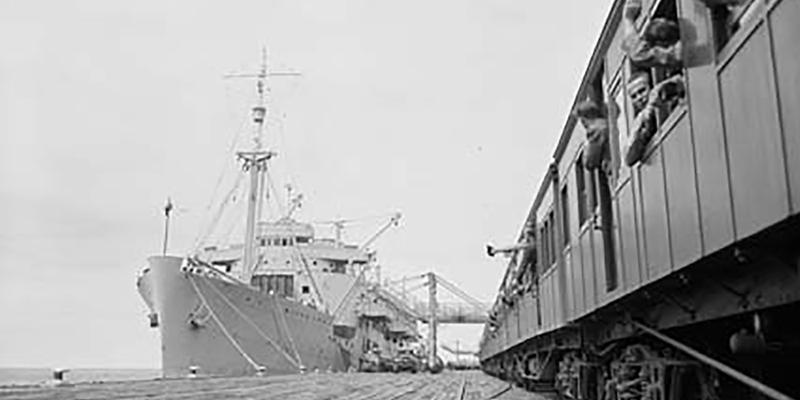
Princes Pier, Port Melbourne was the point of arrival for the first refugees to Victoria after the Second World War
Arthur Calwell was Australia's first Minister for Immigration in the Chifley government. He drove the policy and its implementation. The sense of urgency is conveyed in this speech:
'without immigration the future of the Australia we know will be both uneasy and brief. As a…
The photograph in the window of the Photo Shop on Bay St records the visit of the 'Empire Cruise' to Melbourne in March 1924. Here is the photograph in the Museum Victoria Collection Reg. No: MM 111120 - but the image is reversed. Which is correct?
From 27 November 1923 to 28 September 1924, a fleet of six warships led by the flagship 'Hood'…
